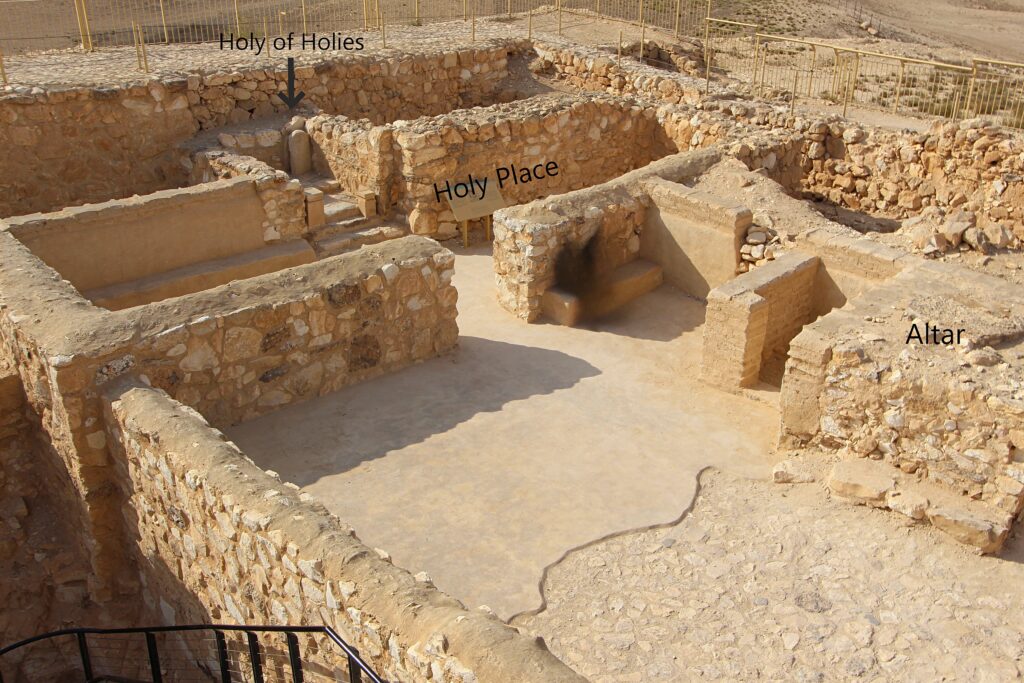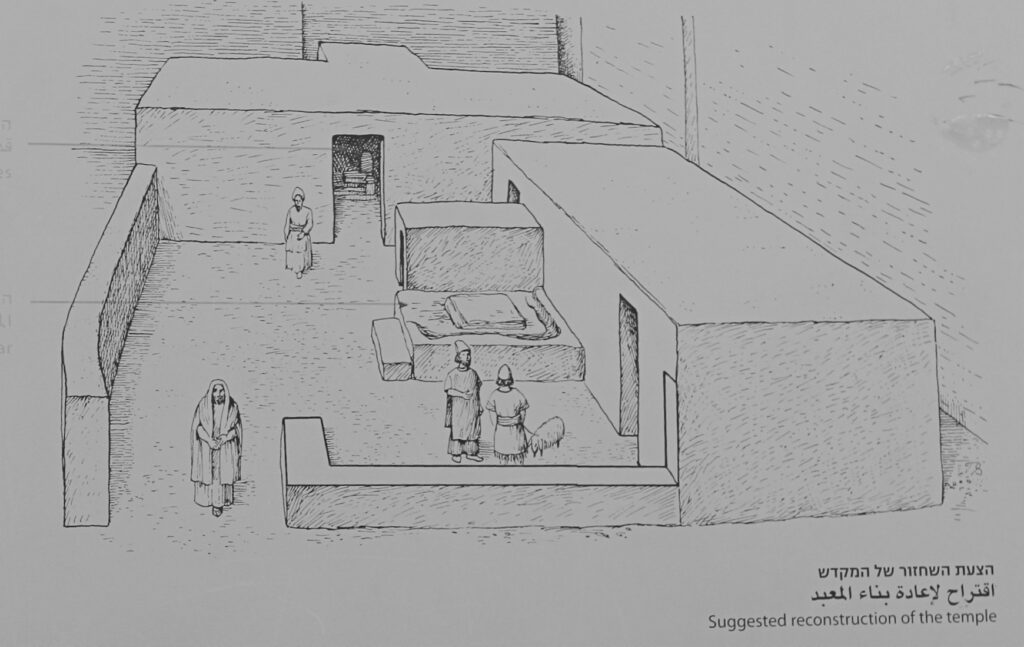
The above Israelite fortress of Arad city has existed for the entire period of the Kingdom of Judah in the Old Testament and was partially reconstructed by archeologists. It is atop an imposing hill in the southern desert of the Negev. The fortress and the temple within the fortress were the heartbeat of the city of Arad.
Arad was settled by the Kenites (Judges 1:16), the descendants of Moses’ father-in-law Jethro. The Kenites were closely allied with Judah and most likely accompanied Joshua in the conquest of Canaan. Having traveled with the Israelites for 40 years in the desert they shared the same culture, language, and religion.
Arad was located adjacent to the south of the tribe of Judah and east of the tribe of Simeon. When Israel was split into two kingdoms after the death of King Solomon (Israel as the northern kingdom and Judah as the southern kingdom), both Simeon and the Arad Kenites were absorbed into the kingdom of Judah. However, as in Judah, the local city administration would continue to be performed by the city elders. By that time they were all known collectively as “Jews.”
Tel Arad has the only Israelite Temple (run by Kenites not Levites) discovered and excavated. Interestingly, this temple was never derided nor endorsed by the Old Testament prophets. Nevertheless, archaeology indicates the temple was closed by King Hezekiah in the late 8th century BC, and it never reopened. King Hezekiah concentrated all temple worship to be in the Jerusalem temple. The temple is similar in layout to Solomon’s Temple (though smaller) and dates from 10th to 8th centuries BC.


In the courtyard of the temple, on the right, is the altar for burnt sacrifice. Inside the door was the Holy Place, where in Solomon’s temple was the menorah light stand, and shew bread table. We do not know what was there in the Arad temple as nothing was found by archeologists. And further in was the Holy of Holies. Here archaeologists discovered two incense altars and a plain standing stone possibly representing God. You can see replicas of the incense altars and standing stone in the photo, the originals are on display in the Israel Museum in Jerusalem. In the Holy of Holies in Solomon’s temple was the Ark of the Covenant also known as the Mercy Seat. Just outside the Holy of Holies at the dividing curtain was an incense altar.
An interesting side note. The excavation of the fortress uncovered a pot shard (oscraca) with both Hebrew and Egyptian writing on it. This shows that both languages were known and used by some of the educated in the Kingdom of Judah. 1 Nephi 1:2.
< Previous post on Mt. Tabor: Prophetess Deborah defeats the Canaanites, and A Possible Site For The Lord’s Transfiguration
Next post on The Great Synagogue in Jerusalem, Israel >
Return to the Homepage
